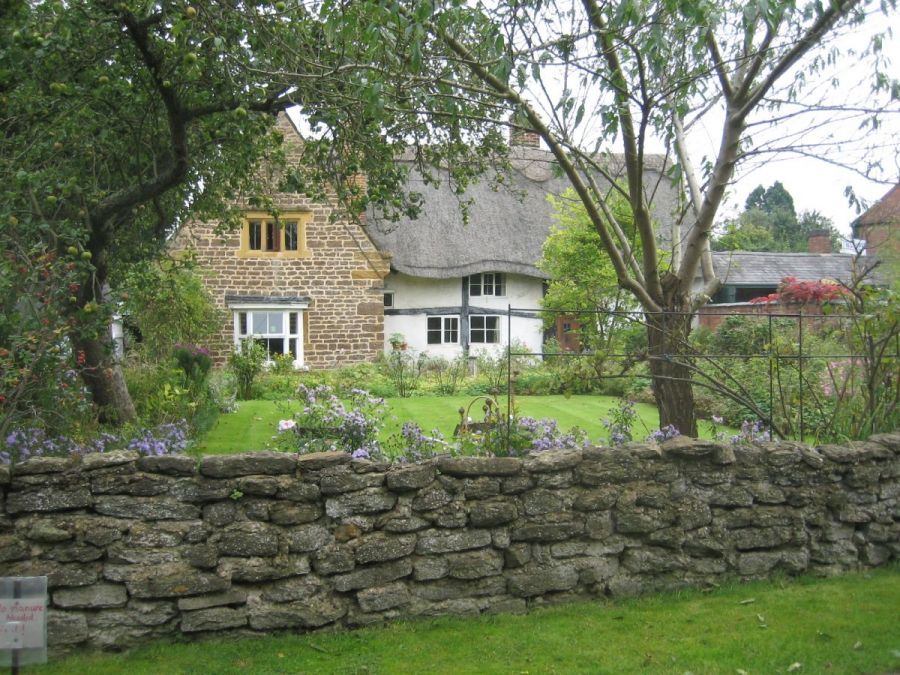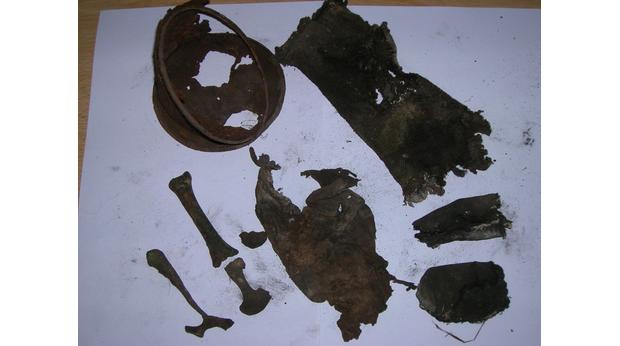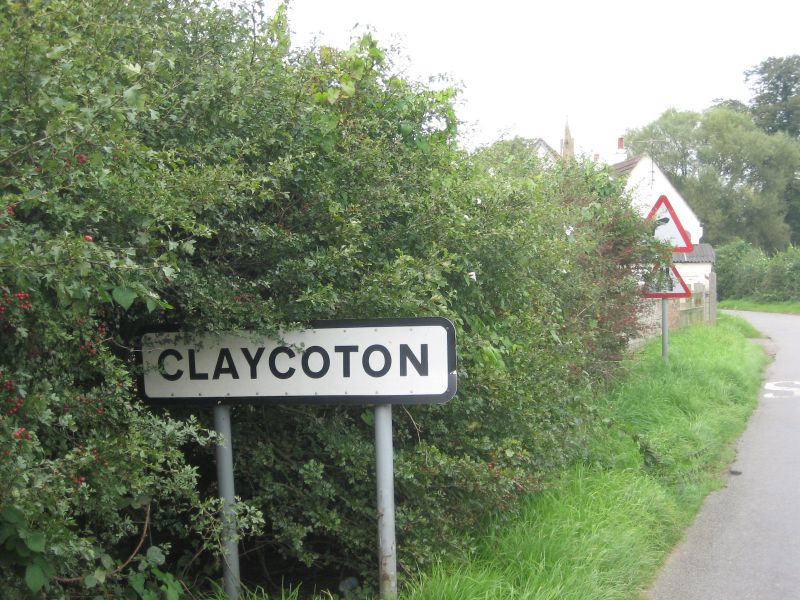Clay Coton Leitherlands

The former St Andrews Church, Clay Coton (©David Richards)
My Leatherland ancestors came from several villages in Northamptonshire and Warwickshire clustered around Rugby. The story begins in the 1650s in the small village of Clay Coton in north-west Northamptonshire, a few miles from Rugby.
My earliest ancestors, Edward and Elizabeth Leitherland seem to have lived in Clay Coton for much of their lives. The parish registers give few clues as to their lives and their baptism and marriage has not been traced, but they had eight children all baptised in Clay Coton between 1652 and 1668. It is likely that Edward and Elizabeth were born around the late 1620s.
A glimpse into the family's circumstance following Edward's death in 1686 can be found in the parish register which described Elizabeth as a "poor widow" when she was buried in 1699. Morevoer three of their children died in infancy and another son possibly died in his late 20s. I have traced the descendants of three of the five children who survived, but I don't know what happened to the other two.
Clay Coton is dominated by the former medieval church of St. Andrews which was built in the 14th century but fell into disuse in the 1950s. It remained empty and derelict for many years but fortunately was renovated as a private house about ten years ago. The graveyard still has public access. The church - now known as St Andrews House - is in a nice setting with a small stream running nearby. There are a handful of buildings in the village, which is surrounded by fields and farmland, including Cedar House Farm.
In the 1841 census Clay Coton's population was 107. In 1871 there were 120 residents.

The tower of the former St Andrews Church (©David Richards)
I discovered the story of the decline and preservation of St Andrews Church from an article "Prayers answered as a home rises from the ruins" which appeared in the Daily Telegraph (September 2001). The article explained how the derelict church was restored and converted into a private house. The church had been disused for 35 years and was threatened with demolition several times. The first demolition threat came in the 1970s when the Church Commissioners obtained permission to demolish it. But eight local objectors intervened and they became trustees taking over responsibility for the building. The demolition order was revoked. But then in 1990 Daventry District Council issued a Dangerous Building Notice which required the church to be knocked down unless the trustees carried out £250,000 worth of repairs, although they had already paid for re-roofing and stabilising the building.
In 1991 Derek Hartwell, an historic building specialist, stepped in to restore the church. It took him eleven years to bring the project to fruition, which involved negotiations with seventeen public bodies, including the Church Commissioners, the Charity Commissioners and English Heritage. Hartwell told the Telegraph : " After we had carried out major repairs to the tower, which was the main area of concern, there had to be a full archaeological survey as the building is a scheduled monument."
For the full article see
www.telegraph.co.uk/property/3293401/Prayers-answered-as-a-home-rises-from-the-ruins
Although converted to a modern four bedroom house inside, Hartwell was able to preserve the ecclesiastical past. The three bells, dating from 1615, 1619 and 1810, remain although the bellropes have been removed for safety reasons. The graveyard remains the property of the Church of England and is still open for burials.
Clay Coton was also the early home of an American politician Thomas Strange Townsend who is said to have been born there on Xmas Day 1815 and brought up in the village. He emigrated to the United States in 1830 at the age of 15 and became a doctor, a member of the Ohio House of Representatives and the Ohio Senate, and later a Professor of Agriculture.

The website www.clements.umich.edu/Exhibits/townshend/index.html tells thestory of his life. Of particular interest is material relating to his time in Clay Coton. The website refers to the Norton Strange Townshend Family papers, which include a document titled "Request of the Poor Inhabitants of Clay-Coton" produced in 1811 presumably for Joel Townshend. The document is an appeal from un-landed farmers and graziers relying on the common land to the powerful "Gentlemen Freeholders" of Clay Coton. Two "Cow Commons" had been removed from public use and awarded to the Parish Clark as a salary. This put a strain on the poor, who depended on the availability of common land for planting crops and grazing livestock.
Clay Coton Witch Pot
A tantalising glimpse into life in Clay Coton was revealed by the discovery of the contents of a "witch pot" hidden in the inglenook (chimney breast) of an old house in Clay Coton about fifteen years ago. This discovery is featured in the BBC's A History of the World in 100 Objects website. The contents were in a decaying metal container and comprise various pieces of fabric from clothing including possibly a sleeve fragment, some fine fabric and some fingers from a glove, plus some small bones believed to be of a cat. The pot would have been placed behind the chimney to prevent witches or evil spirits from entering the house and causing the family harm. The house in which they were found is believed to have been built in the 1500s and upgraded between 1600-1650. It was common practice to hide objects such as bones and clothing in doorways and fireplaces to protect the household.

Contents of the witch pot found in Clay Coton (photo from BBC's History of the World in 100 Objects website)
Was widow Elizabeth Leitherland a witch ? Witches were often poor widows and, although Elizabeth's name does not appear in any historical records as a suspected witch, it is not impossible that the villagers of Clay Coton feared that she was. For more information see :
www.bbc.co.uk/ahistoryoftheworld/objects/khfSdewdQG2m4mdFV0FJeQ
Christopher and Sarah Leatherland
We know a little more about CHRISTOPHER, son of Edward and Elizabeth and my direct ancestor. He lived until he was 77 and, like his mother, was described as "poor" in the burial register.
He married by licence on Easter Day when he was 32 years old. His bride Sarah Watson or Walton came from Creaton, a small village near Northampton. They had nine children, only one of whom died in infancy. I had some success in tracing six of these children, one of whom is my direct ancestor Edward. The eldest son, William, may also be a direct ancestor. The children of Christopher and Sarah are interesting and several of them seem to have prospered.
The 1777 Militia List
The Northants Militia list of 1777 is an excellent source of information and enables us to build up a picture of the village at that time.
The militia list for Clay Coton has twenty men, five of whom were described as "infirm". The list was drawn up by the parish constable John Maggott (who married a Leatherland girl - see the "Leatherland Biographies" page). Six men were weavers, two were labourers, one was a grazier, one was a shepherd, one a carpenter, one a joiner [woodworker], and three were servants.
This shows that the textile industry and weaving in particular was of great importance in the area, and that many occupations were related to weaving rather than farming. It is of course dangerous to assume that everyone had only one job, for example at harvest time it is likely that most villagers would become involved in the harvest.
